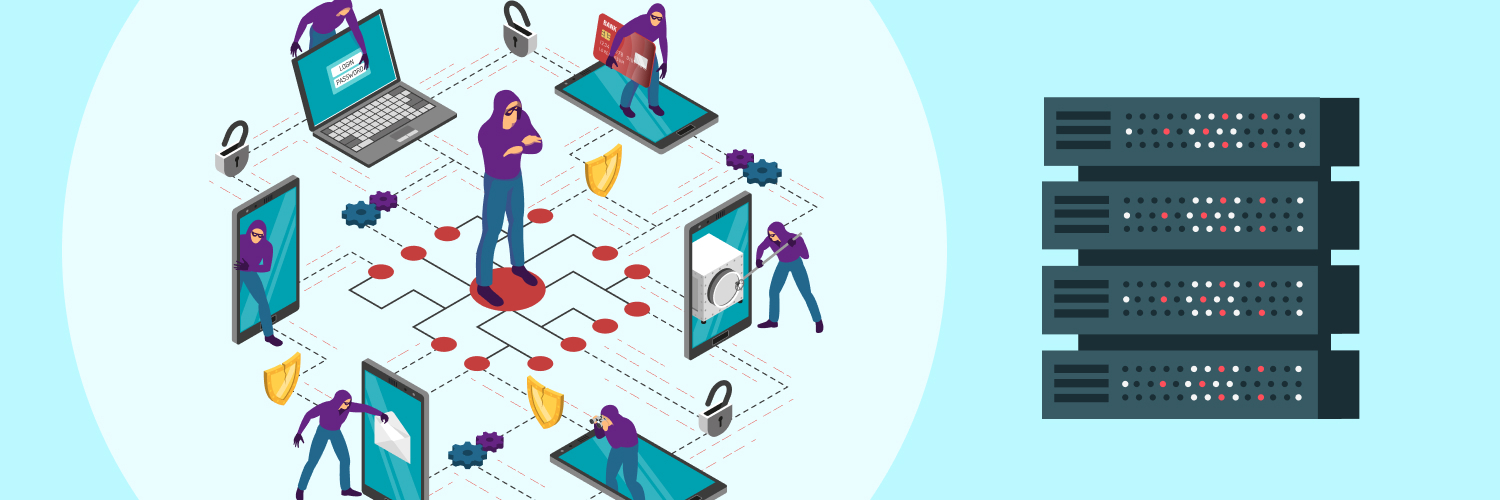Party Data: An Overview Of Zero To Third-Party Data
Data has become the backbone of how we understand customers and prospects. In the past, first-party data was primarily used to target audiences. However, with the growth of technology and data, we now have access to more data than ever before.
It has led to the rise of third-party data, data collected by an entity other than the company itself. Therefore, working with data requires understanding what party data you need to collect and why. This guide explains different data parties in detail and clarifies their importance. It also describes how you can gather this data for your organization.
Party Data: An Overview of Data Parties

Customer data is available from various sources, but not all data is created equal. The party who collected the data (first, second, or third party) can significantly impact its quality, price, and usefulness.
Data party refers to the organization that collected the data. First-party data is data that the company itself manages. It is the most valuable type of data because it comes directly from the source (i.e., your customers).
Second-party data is collected by another organization and then sold or shared with your organization. As you can see, second-party data is not as valuable as first-party data, but it can still be helpful if it comes from a reputable source.
Third-party data is collected by an organization that specializes in collecting data. Such information is generally more expensive than first- or second-party data since you have to buy it from an intermediary.
What Is First-Party Data?

First-party data is data a company collects about its customers, products, or services. The organization typically collects this data through direct interactions with customers or users, such as surveys, customer service interactions, or transactions.
First-party data can also be collected indirectly, such as through web analytics tools. This data is generally more reliable and accurate than third-party data.
There are a few key advantages to first-party data:
- It is more accurate than third-party data since the organization collecting it directly relates to the individual or company in question.
- You can collect this data at a lower cost than third-party data.
- First-party data gives the organization more control over its use and collection.
Why is first-party data important?
Nowadays, companies are looking for innovative ways to collect first-party data because it’s precious. Here are some reasons first-party data is so vital for businesses.
Cost-effective
When you collect second or third-party data, you have to rely on an intermediary to sell it to you. It often means that the data is quite expensive. First-party data doesn’t have this issue. You collect it yourself, so you don’t have to pay anyone for it.
High quality
First-party data is usually much more accurate and up-to-date than second or third-party data. People are more likely to trust companies they know. As a result, they’re more likely to provide accurate information to businesses they trust.
Less competition
If you want to use second or third-party data, you have to compete with other companies who wish to use the same data. It can drive up the price and make getting the data you need harder.
Suppose you want to target people who bought a particular product. You might have to compete with other companies who wish to target those same people.
First-party data isn’t subject to this issue because you’re the only one with access to it. There’s no competition, so you can get the information you need without overpaying.
Allows segmentation
Segmentation allows you to target specific groups of people with relevant messages. It’s an essential part of any marketing strategy. Since segmented campaigns have a 14.31% higher performance than non-segmented campaigns, it’s understandable why you’d want to segment your target customer base.
Marketing first-party customer data makes it easier to segment your audience. For example, you can use first-party data to target people who live in a particular area.
It’s also easier to segment your audience based on behaviors and interests. In addition, you have access to more information about people when you collect first-party data.
Builds relationships
When you collect first-party data, you have an opportunity to build a relationship with the people who provide it.
For example, if you collect email addresses, you can use them to send people information about your products or services. It helps you build a relationship with potential customers and engages them with your brand.
How to collect first-party data
According to Forbes, collecting first-party data has become more critical than ever since it allows companies to create a competitive advantage, improve customer experience, and make better business decisions.
So how can a company collect first-party data? There are a few ways:
Web analytics tools
One way is to use web analytics tools. Web analytics tools allow you to track how users interact with your website. You can use this information to understand your customers and improve your website.
Suppose you own an e-commerce website. You can use web analytics tools to track which products are most popular, how much time users spend on your site, and what kind of devices they use to access your site. With this information, you can improve your product offerings and website design.
Customer surveys
Another way to collect first-party data is to use customer surveys. Customer surveys allow you to gather feedback about your products or services. You can use this feedback to improve your offerings and make your customers happy. Customer surveys can be conducted online or in person.
In-person surveys can be more personal and allow you to collect richer data, but they are also more time-consuming and expensive. On the other hand, online surveys are less personal, but they are easier to administer and reach a larger audience.
Customer service interactions
When you interact with customers, you have the opportunity to gather feedback about your products or services.
You can also use customer service interactions to upsell or cross-sell products. For example, if a customer calls to ask about a product, you can offer them a discount on that product or suggest another product that interests them.
Event-based tracking
Event-based tracking refers to tracking specific events that occur on your website. For example, you can follow when a user adds an item to their shopping cart or makes a purchase.
Event-based tracking allows you to understand how users interact with your site and what kinds of events are most important to them. For example, you might find that most users who add items to their shopping cart do not make a purchase.
You can use this insight to enhance your website design or product offerings.
How to use first-party data
Organizations can use first-party data in several ways, but the most common is to use it for marketing purposes. For example, you can use this data to segment customers, create targeted marketing campaigns, and track the performance of marketing efforts.
Additionally, first-party data can help improve website personalization and create a better overall customer experience. Here are some ways you can use first-party data to your advantage.
Create B2B marketing campaigns
When you have a database full of potential customers, it’s easy to create marketing campaigns specifically tailored to them. You can use first-party data to segment your audience and create targeted content that will resonate with them.
It is especially effective for B2B organizations because you can target specific industries and job titles with your content. In addition, by using first-party data, you can create marketing campaigns that are more likely to generate leads and close deals.
Improve website personalization
You can also use first-party data to improve how you personalize your website. For example, when you have information about your visitors, you can show them content relevant to their interests.
Suppose you have a visitor looking for information about your company’s products. If you know what product they are interested in, you can show them relevant content for that product. It will improve the user experience on your website and make it more likely that the visitor will convert into a customer.
Generate targeted ads
Nowadays, it’s easy to use first-party data to generate targeted ads. For example, you can use the information about your visitors to show them ads that are relevant to their interests.
You can improve your campaigns’ click-through rate and conversion rate with targeted ads. Plus, you can save money by only showing the ads to the people who are most likely to be interested in them.
Create a personalized experience
Eighty percent of customers are more likely to do business with an organization offering them a customized experience. Today’s customers are overwhelmed by the number of options and the amount of information they must process.
It is essential to offer a personalized experience to customers, and first-party data can help you do that. By using the information you have about your visitors, you can create a customized experience for them. For example, you can show them relevant content, ads, and offers based on their interests.
It will make them feel valued and appreciated. Plus, it will improve the chances of them doing business with you.
What Is Second Party Data?

Second-party data is collected by one entity and then sold or shared with another. Companies collect it through first-party data collection methods, such as online surveys, website cookies, and loyalty programs.
The data is then packaged and sold to a second party, who can use it for marketing purposes. For example, a company might collect customer data and then sell it to a marketing research firm.
Second-party data can be valuable for marketers because it provides insights into customer behavior that they can use to target ads and improve marketing campaigns. However, there are also privacy concerns associated with the use of second-party data, as it is often collected without the knowledge or consent of the people.
Second-party data examples
Familiarity with second-party data can help you understand how this data can improve your marketing efforts. Here are a few examples:
- A travel site could use second-party data on popular destination searches to better understand what kind of content to create and what offers to send out.
- An e-commerce site could use second-party data on popular products to stock more inventory of those items.
- A news site may use second-party data on trending topics to decide what stories to pursue.
Suppose you have a clothing store and created an athletic wear line. You want to understand what kind of ads you should show to your target audience.
You can buy relevant data from an athletic shoewear brand or a publisher creating content about fitness and sports. With this data, you can get an insight into the trends that interest your target audience. You can use this data to improve your ad targeting and make sure you are showing suitable ads to the right people.
Benefits of second-party data
Second-party data is becoming increasingly popular as a way for companies to improve their marketing efforts. Several benefits come with using second-party data, including:
Better ad targeting
If you want to run informed marketing campaigns, it’s imperative to understand your target audience. Second-party data can help you identify your target audience more accurately, which can lead to better ad targeting and improved results.
Increased reach
Another benefit of second-party data is that it can help you increase your marketing campaigns’ reach. By partnering with another company that has access to a broader range of data, you can extend the reach of your campaigns and connect with more potential customers.
Predict customer behavior
When you have access to second-party data, you can start to predict customer behavior patterns. For example, if users search for rentals in their area, they likely plan to move soon.
Thus, advertisers can use this information to show ads for moving services or apartment complexes. In addition, you can track customer behavior to predict the products and services a customer will be interested in buying.
Improved performance
Finally, second-party data can also help you improve your marketing campaign’s overall performance. When used correctly, it can provide valuable insights that can help you to optimize your campaigns for better results.
What Is Third-Party Data?

Third-party data refers to data collected by organizations other than the individual or organization that uses it. Such data is helpful for marketing purposes, such as targeting ads and understanding consumer behavior. It can also be beneficial for research or for making business decisions.
Companies collect this data through cookies, web beacons, and other tracking technologies. They then sell it to other companies, who use it for their purposes. There are several benefits to using third-party data. It can help you target your audience more effectively, reach new customers, and collect insights about customer behavior.
However, there are also some risks associated with its use. These include privacy concerns and the potential for data breaches. When using third-party data, it’s essential to be aware of both the benefits and the risks to make the best decisions for your business.
Benefits of third-party data
Third-party data can be used in several ways to benefit your business. Some of the most common benefits include:
Gain customer insights
In today’s competitive business landscape, it’s more important than ever to understand your target audience. Third-party data can help you gain valuable insights into your customers’ demographics, behaviors, and preferences.
For example, you might use third-party data to learn that your target customers are primarily female, middle-aged, and live in urban areas. This information can help you tailor your marketing efforts to reach this audience better.
Improve marketing effectiveness
Third-party data can also help improve the effectiveness of your marketing campaigns. For example, it can be used to segment your target audience and customize your marketing messages for maximum impact.
To reach working mothers, you might use third-party data to identify which media outlets they’re most likely to consume. You can then use this information to place ads in these channels and reach your target consumers more effectively.
Identify potential customers
Since third-party data is typically collected on a large scale, it can be used to identify potential customers that you might not have otherwise considered.
For example, if you sell products for new parents, you might use third-party data to identify women who recently had a baby and are in the market for your product. You can reach out to these potential customers and offer them your product with this information.
Gain a competitive edge
In a data-driven world, businesses that use third-party data often have a competitive edge over those that don’t. Using third-party data can help you better understand your target market, reach your consumers more effectively, and identify potential customers.
More importantly, it gives you the customer information to create lucrative campaigns that bring in revenue.
What Is Zero-Party Data?

Zero-party data is customer data that is voluntarily and explicitly provided by the customer, often in exchange for a service. This data may be collected through forms, surveys, loyalty programs, or other interactions with the company.
It can include personal and behavioral information, such as name, contact information, preferences, and purchase history. Zero-party data is a valuable asset for companies because it is typically more accurate than first- or third-party data. As a result, it can improve customer relationships, personalize marketing messages, and drive sales.
When used effectively, zero-party data can help companies create a better customer experience and build trust with their customers. For example, a company that collects customer preferences can use that information to send personalized coupons or recommendations, leading to increased sales.
Zero-party data can also be used to improve customer service. For example, if a company knows a customer’s purchase history, it can provide better support by offering relevant advice and recommendations.
Zero-party data examples
Zero-party data is essentially the data you collect about your customers without them having to take any action. This could be data you’ve gathered from their interactions with your brand, such as purchase history or web browsing behavior. It could also be explicitly provided data, such as their email address or demographic information. Here are some examples of zero-party data:
- Active time spent on page: The time a customer actively engages with your content is a good indicator of their interest level.
- Content sharing: If customers share your content with their network, it’s a good sign that they’re engaged and interested in what you have to say.
- Email open rates: Keeping track of email open rates can give you insights into how engaged your subscribers are with your content.
- Product reviews: Customers who take the time to write product reviews are usually pretty engaged with the product and brand.
- Surveys and polls: Asking customers for their feedback via surveys or polls is a great way to collect zero-party data.
- Purchase history: You can track a customer’s purchase history to get insights into what they like and don’t like.
Benefits of zero-party data
Since zero-party data is collected with the consumer’s explicit consent and knowledge, it is naturally more accurate and reliable than first- or third-party data.
In addition, zero-party data can be used to improve customer experience and loyalty, drive sales conversion, and support marketing personalization, all while protecting customer privacy. Here are some benefits of using this type of data:
Eliminates guesswork
Companies no longer have to make assumptions about their customers based on flimsy data sets. Forbes claims zero-party data to be the “new oil,” considering its lucrativeness and need. With zero-party data, they can know what their customers want and need.
Builds trust and loyalty
Customers are more likely to trust and be loyal to companies that respect their privacy and use their data responsibly. When used correctly, zero-party data can help build these important relationships between brands and their customers.
Enables personalized experiences
Since zero-party data is more accurate, companies can use it to create personalized experiences for their customers, which is impossible with first or third-party data.
Personalized experiences help customers feel valued and appreciated, increasing loyalty and sales conversion rates.
Supports GDPR compliance
The General Data Protection Regulation (GDPR) is a set of regulations that protect the privacy of European citizens. Any company that processes or intends to process the data of EU citizens must comply with the GDPR.
Nonconsensual third-party data collection is not GDPR-compliant because the customer does not know their data is being collected or how it will be used. Zero-party data is GDPR-compliant because customers explicitly consent to collecting and using their data.
Web Scraping for Collecting Data

When you collect third-party data, it incurs some risk. First, you need to ensure that the data is valid and has no errors. Invalid or incorrect data can lead to inaccurate results and cause issues with your analysis.
At the same time, it’s also costly since you have to buy this data. The same applies to second-party data too. What if you could collect your preferred data yourself? Instead of getting the bulk of data, you can only focus on gathering the information you need.
For instance, in retail e-commerce, you might not want all customer insights, such as demographic, age, or shopping habits. Instead, you only want to know what kind of product descriptions garner the highest reach and click-through. That’s where web scraping comes in.
Web scraping is a process of extracting data from websites. It involves using a computer program to send requests to a web server and retrieve the response. This response is typically in HTML or XML format, which the program then parses to extract the desired data.
Web scraping can help you collect data from various sources, including social media, e-commerce websites, and even PDFs. It’s a great way to get the data you need without paying for it.
What do you need to scrape the web?
If you’re going to scrape the web, there are a few tools you’ll need that will come in handy:
Proxies
Proxies are an essential tool for web scraping and there are many different proxies, each with its advantages and disadvantages. The most common types of proxies are residential, ISP, and data center. Residential proxies are more difficult to detect by websites, as they use IP addresses assigned to real people from Internet Service Providers.
Rayobyte provides ethically-sourced residential proxies that you can use for web scraping and other purposes. These proxies are always sourced ethically and have minimal downtime.
Meanwhile, data center proxies come from data centers and are known for their faster speeds. They are cheaper than residential proxies and can be used for web scraping if you’re careful.
Finally, ISP proxies are a mix of data center and residential proxies. They are housed in a data center but are associated with Internet Service Providers. They have the speed and authority of both these proxy types, truly the best of both proxy worlds.
Web scraper
A web scraper is a tool used to collect data from websites. It works by making a request to a website and then extracting information from the response. Web scrapers can collect data for various purposes, such as monitoring prices, gathering data for research, or keeping track of changes on a website.
There are several ways to create a web scraper, but the most common is to use a web scraping tool or library. It’s also possible to write your web scraper from scratch using a programming language like Python. Once you’ve created your web scraper, you’ll need to configure it to make requests to the websites you want to scrape data from.
Alternatively, you can use a ready-made web scraper, such as Rayobyte’s Web Scraping API. You simply have to provide the URLs you want to scrape, and the scraper does the rest, saving the scraped data in your preferred file format.
How Can Companies Use Customer Data for Marketing/Business Strategies?

With data becoming more and more readily available, companies find new ways to use it for marketing and business strategies. Here are some examples:
Identifying customer trends
Companies can use data to identify customer trends. You can use this information for the following purposes:
- Customer segmentation: Instead of targeting all customers with the same message, companies can use data to segment them into groups. In this way, you can send targeted messages that are more likely to resonate with each group.
- Targeted marketing campaigns: You can use data to target your marketing campaigns more effectively. For example, you can use customer location, age, and gender data to target your ads.
- Developing new products and services: Data helps you understand what customers want and need. You can use it to create new products or services that meet customer demand.
Improving customer service
Data can be instrumental in improving customer service. By understanding how customers interact with your company, you can make changes to improve the customer experience.
For example, you can use data to track customer satisfaction levels. It will help you identify why customers are dissatisfied and make changes to improve the experience.
Social media is a great way to connect with customers and get feedback. You can use first-party and zero-party data from social media to understand customer sentiment and make changes accordingly.
Reducing churn
Churn is a big problem for companies. So it’s essential to use data to reduce it. There are a few ways to do this:
- Identify at-risk customers: Look for early warning signs that a customer is about to leave. It could be things like using your product less or having more negative interactions with customer service.
- Reach out to at-risk customers: Once you’ve identified customers at risk of churning, reach out to them proactively. See what’s going on and if there’s anything you can do to help.
- Make it easy to stay: Make it easy for customers to use your product. It includes having a great onboarding experience or offering customer support.
Personalize user experience
One of the most significant benefits of customer data is that it allows businesses to personalize the user experience. You may do this through targeted marketing and content recommendations.
For example, Netflix uses customer data to recommend similar shows and movies that a user might like. Personalized content helps keep users engaged with the platform.
Similarly, Amazon uses customer data to recommend products that a user might be interested in. For instance, when you buy a book on Amazon, the website recommends other books similar to what you just purchased.
Customer data can also provide a more personalized customer service experience. By knowing your customers and what they have purchased in the past, you can offer them more relevant and targeted support.
Tips for Collecting Customer Data

Understanding your customer is essential whether you’re a startup or an established business. After all, your customer is the reason you have a business in the first place.
The process of understanding your customer starts with collecting data about them. But with all the different ways to collect customer data, it can be challenging to know where to start. Here are some tips:
Use social media to your advantage
Social media is a great way to collect data about your target market. Not only can you learn about their demographics, but you can also get insights into their interests, needs, and wants.
You can use this information to create more targeted marketing campaigns and improve your overall marketing strategy.
Utilize online surveys
Another great way to collect customer data is through online surveys. Surveys can help gather information about your customers’ buying habits, needs, and wants.
You can use this data to improve your product offerings and make sure you’re meeting your customers’ needs. In addition, since this is first-party data you collect with your customers’ consent, you will likely get more actionable and accurate results.
Track customer behavior on your website
If you have a website, you can track your visitors’ behavior to learn more about them. By monitoring what pages they visit, how long they stay on each page, and what links they click, you can collect zero-party data to get valuable insights into their interests and needs.
For example, if you see a segment of customers spend longer-than-average time on your product pages, you can infer that they may be interested in purchasing your products. This data can help you improve your website design and overall user experience.
Collect customer data at events
If you attend or host events, this is an excellent opportunity to collect customer data. You can use event registration forms to gather information like contact information, demographics, and interests.
Once the event is over, you can follow up with attendees to collect even more data about their experience and what they thought of your products or services.
Scrape data responsibly
If you use proxies or a web scraper to collect data, make sure you do it responsibly. This means only scraping public data that is easily accessible and not restricted by terms of service.
You should also respect people’s privacy by not scraping sensitive information like addresses or phone numbers. If you scrape this type of data, be sure to protect it.
Moreover, don’t bombard the target website with requests, as it may slow their website speed. It’s also imperative to use paid proxies rather than free ones since the latter are not secure and can get you blocked.
FAQs
Here are some frequently asked questions about data parties.
What is a data party?
A data party is a category a data belongs to. Data belongs to different parties, depending on how it is collected, who collects it, and how it is used. The standard data parties are first, second, third, and zero.
What is first-party data?
First-party data is data an organization collects from its customers or website visitors. For example, it includes customer email addresses, phone numbers, purchase history, etc.
What is second-party data?
Second-party data is collected by one organization from another organization with which it has a business relationship. It includes website activity, social media profiles, and customer feedback.
What is third-party data?
Third-party data comes from sources outside of an organization, such as data aggregators and marketing research firms. It includes demographic information, lifestyle preferences, and credit scores.
Conclusion

Party data, such as first, second, third, and zero, differ in how they are organized and the types of data they store. However, they all play an essential role in the business world by helping keep companies running smoothly. This guide has looked at the four different types of party data and their roles in businesses. For example, companies can use data to create lucrative marketing campaigns, segment customers, and make better decisions.
While data is essential for businesses, it is also vital to protect the privacy of customers and employees. Therefore, all companies should have policies and procedures to ensure that data is used ethically and legally. When collecting data through web scraping, businesses must use paid proxies like those from Rayobyte rather than free proxies. Paid proxies tend to be more reliable and give you desired results without fearing blocks and bans from target websites.
The information contained within this article, including information posted by official staff, guest-submitted material, message board postings, or other third-party material is presented solely for the purposes of education and furtherance of the knowledge of the reader. All trademarks used in this publication are hereby acknowledged as the property of their respective owners.




